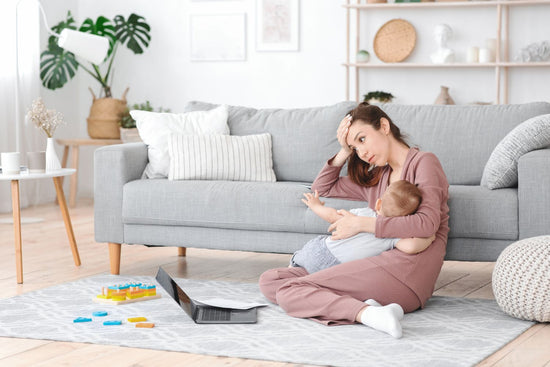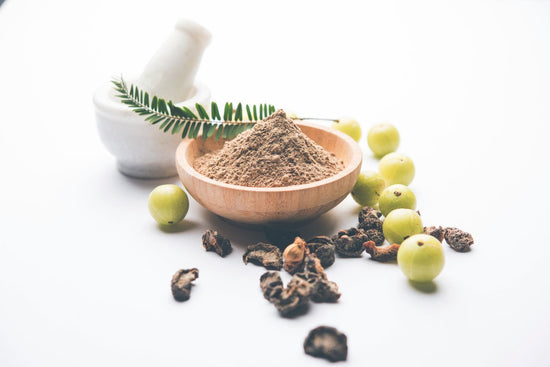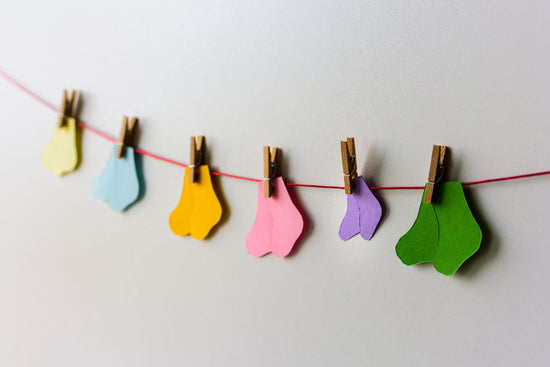The primary goal of Ayurvedic care postpartum is to bring balance to the new mother’s vata energy, to prevent excess air from entering the body, and to restore the new mother’s mind and body after the rigors of labor. Massages play a very important role in achieving these.
This is the second post on Ayurvedic care postpartum. The first post discusses special diets and teas, the importance of rest and other practices.
Daily oil massages for the new mother and baby

New mothers that have had uncomplicated natural deliveries usually start their daily oil massages and stomach binding in the first week postpartum. Mothers that have had less straightforward deliveries or c-sections usually start at the end of week two, depending on the advice of their doctors and the recovery of their scar.
Typically, an experienced massage therapist will come on board for a period of one to three months, and will be responsible for giving the new mother and baby daily oil massages or abhyanga, using warm oils that are designed to reduce vata.
Traditionally, these oils would be infused with herbs such as bala, chandana, kushta, ashwagandha, eranda (castor) or til (sesame). In southern India, where the climate tends to be humid, coconut oil is preferred and is infused with warming herbs. Olive oil is also common nowadays, and clove infused oil has been found to reduce lower back pain among new mothers[1]
Not your typical ‘spa’ massage
Oil massages for the new mother takes place in a warm room - air conditioning is switched off and windows are closed to prevent excess air. Sweat is another benefit of the warm environment – it is considered to be a good way for the body to rid itself of excess fluids gained during pregnancy.
The massage can last up to an hour, and is quite vigorous to relieve aching bones and improve circulation. It is usually a full body and head massage with extra oil applied to the naval area. The breasts are usually avoided and the abdomen is firmly massaged (if the health of the new mother allows for it). According to Ayurveda, this helps the uterus contract to its original size and the organs to return to their original positions.
The Ayurvedic therapist typically shares advice on breastfeeding, postpartum diet, parenting and motherhood. She answers questions, quells doubts and provides valuable emotional support. She also looks after the baby, allowing the new mother a precious nap during the massage.
Numerous benefits of abhyanga

Postpartum massages help with the following:
- Provide relief from pain that might residue from delivery
- Soothe new aches from carrying and holding a baby around the clock (which can be stressful on arms, shoulders and the back)
- Remove fatigue
- Strengthen the core muscles that have stretched during pregnancy
- Improve stability and posture
- Prevent dryness and itchiness
- Remove ‘lochia’, blood and other discharge from the uterus
- Increase circulation and thus reduce swelling
- Reduce stress and help deal with postpartum blues (one study found that massage therapy reduces cortisol by 31%[2] )
- Aid in overall relaxation and help the new mother sleep better
As a result of all these, massage is also believed to promote better lactation.
The newborn baby would also get a fifteen-minute daily massage. Ayurvedic oils or baby oils can be used, depending on what suits the sensitive newborn skin. As with the mother, extra oil would be applied to the naval area and also to the slight depression at the baby’s head (the crown).
Self-massage for the New Mother and Baby
Post-massage warm bath and stomach binding

After the massage, the new mother would have a warm shower. The massage therapist might give baby a massage at this time and then give baby a warm shower. The new mother would typically have a snack to boost her energy, such as nuts, ghee-rich laddoos, protein-rich foxnuts, or nut-based halwas (Indian sweet dishes), and then she would nurse baby. The warm shower and breast milk would likely put baby to sleep, allowing the massage therapist to focus on binding the mother’s abdomen.
In Ayurveda, the abdomen is bound with a long muslin or cotton sari for a period of twelve hours or overnight. This is to reduce the opportunity for air to enter the uterus and to balance the new mother’s vata. Stomach binding is believed to help the uterus contract, guide the organs to their original position and provide support to the back. Many women also attribute their postpartum weight loss to stomach binding!
A holistic approach to recovery
With its holistic guidelines, Ayurveda brings structure and routine to the postpartum period. Each practice offers several benefits, both for the short and the long term. It’s no wonder Ayurvedic postpartum care is often referred to as ’40 days for 40 years.’
Disclaimer: This article is only meant to illustrate the practices commonly followed in Ayurvedic postpartum care and is not a guide. Please consult your primary health care provider before following any of the practices mentioned above.
References
Related Products
Golden Milk for Motherhood
This delicious infusion of high curcumin turmeric, ashwagandha and ginger makes a bright soothing cup of golden milk that will calm you down and fuel you with clean energy at the same time.
Posted by Nidhi Chimnani
Nidhi is a fresh mom who has lived in over 8 countries and has experienced several cultures closely. She was editor-in-chief of an established magazine for several years. She currently lives in Dubai and writes a blog about her experience with baby stuff. See her blog here.






